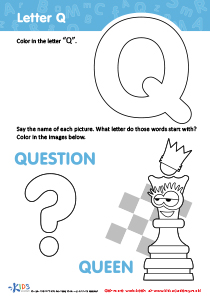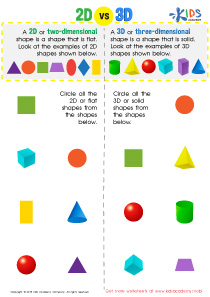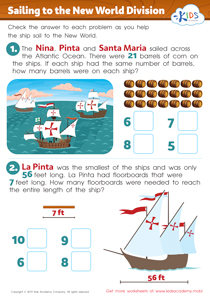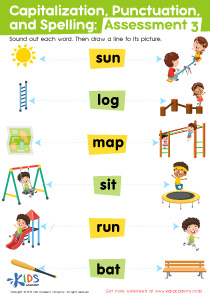Normal Number Stories - 1 Less Quizzes for Ages 3-4
2 results
2 filtered results
Clear all filters2 filtered results
-
From - To
Dive into the world of numbers with our Normal Number Stories - 1 Less interactive assessment quizzes, perfectly tailored for children ages 3-4! These captivating quizzes not only check your child's understanding of basic subtraction concepts but also reinforce their knowledge through immediate feedback. Engage your little ones with fun, story-based problems that teach the concept of ‘one less’ in a manner that's easy for them to grasp and enjoy. Ideal for early learners, our quizzes make learning an exciting adventure, paving the way for a strong foundation in mathematics. Let your child embark on this numerical journey today!
In the world of early childhood education, where the building blocks of numeracy are laid, the Normal Number Stories - 1 Less for Ages 3-4 stands out as an exceptional resource. This interactive tool is designed to introduce young learners to the fundamental concept of subtraction in a way that is both engaging and comprehensible. The quizzes, crafted with the developmental stage of 3 to 4-year-olds in mind, provide a unique blend of storytelling and interactive problem-solving that make learning about numbers less of an academic chore and more of an adventure.
Understanding subtraction, even at its most basic level, is a crucial skill for young children. The concept of 'one less' is where it all begins, setting the foundation for more complex mathematical operations they will encounter as they progress through their academic journey. The Normal Number Stories - 1 Less for Ages 3-4 capitalizes on the natural curiosity and the imaginative capacities of children in this age group, turning each quiz into a narrative adventure where numbers come to life.
The interactive quizzes are structured around engaging stories, where each scenario is carefully designed to illustrate the concept of 'one less' in a context that is both familiar and exciting to a young child. This could be a tale of five apples on a tree with one falling down, leaving four, or a story of six balloons with one flying away, leaving five. These stories not only make the abstract concept of subtraction tangible but also help in enhancing a child’s listening and comprehension skills.
One of the key strengths of the Normal Number Stories - 1 Less quizzes is their interactivity. Children are not passive recipients of information; instead, they are active participants in the storytelling process. They are encouraged to count, think, and respond, making decisions that drive the story forward. This active engagement ensures that the concept of 'one less' is not just memorized but understood and internalized.
For parents and educators, the Normal Number Stories - 1 Less for Ages 3-4 serves as an invaluable tool. It offers a method of teaching that aligns with the natural learning preferences of children at this developmental stage. The quizzes are designed to be intuitive, allowing children to navigate them with minimal assistance, fostering a sense of independence and confidence in their abilities. Additionally, these quizzes provide immediate feedback, which is crucial for learning. Children can instantly see the results of their actions, understand their mistakes, and learn from them, promoting a growth mindset from an early age.
Moreover, the adaptability of these interactive quizzes means they can be integrated into various learning environments – from the classroom to home schooling, and even on-the-go learning. This flexibility ensures that children can always have access to a fun, educational resource that strengthens their mathematical foundation, regardless of their circumstances.
In conclusion, the Normal Number Stories - 1 Less for Ages 3-4 is more than just a set of quizzes. It's a comprehensive learning tool that not only introduces children to the concept of subtraction in a fun and engaging way but also nurtures a wide array of cognitive and emotional skills. By blending storytelling with interactive problem-solving, it ensures that the educational needs of children are met in a manner that complements their natural development, making it an indispensable resource for early learning.













